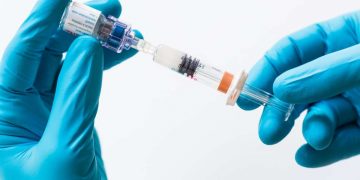 Did you know that your brain can be deprived of oxygen for 10 seconds or more, hundreds of times each night, often without awareness? Sleep apnea causes breathing to repeatedly stop and start during sleep, depriving your brain and organs of oxygen. In Singapore sleep apnea clinics, patients are diagnosed with obstructive, central, or mixed sleep apnea, each requiring specific treatment approaches. Early detection is crucial, as untreated sleep apnea can lead to fatigue, cardiovascular problems, and long-term organ damage.
Did you know that your brain can be deprived of oxygen for 10 seconds or more, hundreds of times each night, often without awareness? Sleep apnea causes breathing to repeatedly stop and start during sleep, depriving your brain and organs of oxygen. In Singapore sleep apnea clinics, patients are diagnosed with obstructive, central, or mixed sleep apnea, each requiring specific treatment approaches. Early detection is crucial, as untreated sleep apnea can lead to fatigue, cardiovascular problems, and long-term organ damage.
Table of Contents
Cardiovascular Complications
Oxygen levels dropping below 90% during apnea episodes force your heart to pump harder, increasing blood pressure throughout the night. This nocturnal hypertension persists into daytime hours, with untreated sleep apnea patients showing elevated blood pressure readings.
The repeated oxygen deprivation triggers inflammatory markers including C-reactive protein and interleukin-6, which damage blood vessel walls. These inflammatory processes accelerate atherosclerosis, creating arterial plaques that restrict blood flow to organs. Patients with untreated moderate sleep apnea develop cardiovascular disease at higher rates than those without the condition.
Heart rhythm disturbances occur when oxygen deprivation disrupts your heart’s electrical system. Atrial fibrillation appears in sleep apnea patients at higher rates, with episodes often occurring during apnea events. The irregular heartbeat increases stroke risk and requires anticoagulation therapy to prevent blood clots.
Left ventricular hypertrophy develops as your heart muscle thickens from working against increased pressure. This structural change reduces pumping efficiency and leads to heart failure. Sleep apnea patients show enlarged left ventricles on echocardiograms within years of symptom onset without treatment.
Sudden cardiac death risk increases during early morning hours when apnea episodes cluster. The combination of low oxygen, high carbon dioxide, and sympathetic nervous system activation creates electrical instability that can trigger fatal arrhythmias between 4 AM and 6 AM.
Metabolic and Endocrine Disruption
Insulin resistance develops through sleep apnea’s disruption of glucose metabolism. Intermittent hypoxia activates stress hormones like cortisol and adrenaline, which increase blood sugar levels. Sleep apnea can contribute to elevated fasting glucose readings that may meet prediabetes criteria.
Leptin and ghrelin hormone imbalances drive weight gain in sleep apnea patients. Sleep fragmentation increases ghrelin (hunger hormone) while decreasing leptin (satiety hormone), creating persistent hunger even after adequate calorie intake. This hormonal disruption makes weight loss challenging without addressing the underlying sleep disorder.
Did You Know?
Sleep apnea disrupts testosterone production in men through suppression of luteinizing hormone during REM sleep, when testosterone synthesis peaks. This hormonal decline affects muscle mass, bone density, and libido independent of age-related changes.
Thyroid function deteriorates with chronic sleep deprivation from apnea episodes. TSH levels rise while T3 and T4 production decreases, creating subclinical hypothyroidism. These thyroid changes further slow metabolism and compound weight management challenges.
Non-alcoholic fatty liver disease develops through sleep apnea’s metabolic effects. Intermittent hypoxia promotes liver fat accumulation and inflammation, progressing to fibrosis in severe cases. Liver enzyme elevations appear on routine blood tests, with ALT and AST potentially exceeding normal ranges.
## Neurological and Cognitive Impact
Brain structure changes occur with chronic oxygen deprivation from untreated sleep apnea. MRI scans reveal reduced gray matter in the hippocampus and frontal cortex, areas responsible for memory formation and executive function. White matter lesions also increase, disrupting neural communication pathways.
Memory consolidation fails when sleep apnea fragments REM and deep sleep stages. New information cannot transfer from short-term to long-term memory storage, causing patients to forget conversations, appointments, and learned tasks. Verbal and spatial memory show measurable decline on neuropsychological testing.
Reaction times slow to concerning levels in untreated sleep apnea patients. Microsleeps lasting 1-10 seconds occur during waking hours, particularly during monotonous activities like driving. These brief lapses in consciousness happen without warning and cannot be prevented through willpower.
Important Note
Driving with untreated sleep apnea may increase accident risk. The combination of microsleeps, slowed reactions, and impaired judgment creates concerning conditions that may affect driving safety.
Depression and anxiety disorders develop through sleep apnea’s effects on neurotransmitter balance. Serotonin and dopamine production decrease with sleep fragmentation, while stress hormones remain elevated. Patients report persistent low mood, irritability, and panic symptoms that may not respond to standard antidepressant treatment until sleep apnea is addressed.
Stroke risk may increase through multiple mechanisms in sleep apnea. Oxygen deprivation, blood pressure surges, and increased clotting factors create conditions for both ischemic and hemorrhagic strokes. Post-stroke patients with untreated sleep apnea may show different recovery outcomes and recurrence rates.
Respiratory and Immune System Effects
Pulmonary hypertension develops when low oxygen levels cause lung blood vessels to constrict. Right heart strain follows as pressure in pulmonary arteries exceeds 25 mmHg at rest. This progression leads to right-sided heart failure, with symptoms including leg swelling and exercise intolerance.
Chronic bronchitis symptoms worsen with sleep apnea due to airway inflammation. Morning cough with phlegm production increases, while lung function tests show reduced FEV1/FVC ratios. The combination of sleep apnea and existing lung disease accelerates respiratory decline.
Immune function deteriorates through sleep deprivation and stress hormone elevation. T-cell and natural killer cell activity decrease, reducing the body’s ability to fight infections and eliminate abnormal cells. Vaccination responses weaken, with antibody production falling below protective levels.
Upper respiratory infections occur more frequently and last longer in sleep apnea patients. The combination of mouth breathing, which bypasses nasal filtration, and weakened immunity creates vulnerability to viral and bacterial pathogens. Sinusitis becomes chronic, requiring repeated antibiotic courses.
What an ENT Specialist Says
ENT evaluation reveals specific anatomical factors contributing to airway obstruction during sleep. Enlarged tonsils, elongated soft palate, or deviated nasal septum often combine to create multiple obstruction points. Understanding your unique anatomy guides treatment selection between CPAP therapy, oral appliances, or surgical interventions.
Endoscopic examination during drug-induced sleep shows exactly where your airway collapses. This dynamic assessment identifies whether obstruction occurs at the soft palate, tongue base, or lateral pharyngeal walls. Treatment targeting the specific collapse pattern may achieve outcomes that differ from generic approaches.
Some patients abandon CPAP therapy due to discomfort or claustrophobia. Modern surgical techniques like hypoglossal nerve stimulation or maxillomandibular advancement offer alternatives for CPAP-intolerant patients. These procedures physically expand or stabilize the airway to prevent collapse during sleep.
Sleep apnea treatment has evolved beyond traditional uvulopalatopharyngoplasty (UPPP). Minimally invasive procedures using radiofrequency or laser energy reduce recovery time while achieving comparable results. Multi-level surgery addressing several obstruction sites simultaneously provides comprehensive treatment for complex cases.
Putting This Into Practice
- Consider scheduling a sleep study if you experience loud snoring combined with witnessed breathing pauses, gasping awakenings, or excessive daytime sleepiness despite adequate sleep hours. Home sleep tests measure oxygen levels, heart rate, and breathing patterns, while laboratory polysomnography provides comprehensive data including brain waves and muscle activity.
- Track your symptoms using a sleep diary noting snoring intensity, number of awakenings, morning headaches, and daytime alertness levels. Document blood pressure readings at different times, as morning hypertension may suggest sleep apnea. Share this data with your healthcare professional to guide diagnostic decisions.
- Modify sleep position using tennis balls sewn into pajama backs or positional therapy devices that prevent back sleeping. Side sleeping may reduce airway collapse in mild cases, though severe apnea requires medical intervention regardless of position.
- Reduce alcohol consumption and avoid sedatives within four hours of bedtime, as these substances relax throat muscles excessively. Weight reduction through diet and exercise decreases neck circumference and tongue fat, potentially improving airway patency.
- Maintain consistent sleep schedules with regular bedtime and wake times, even on weekends. Sleep deprivation worsens apnea severity by increasing upper airway collapsibility and reducing muscle tone.
When to Seek Professional Help
- Loud snoring that disturbs your partner’s sleep
- Witnessed breathing pauses during sleep
- Gasping or choking sensations that wake you
- Morning headaches occurring several days per week
- Excessive daytime sleepiness affecting work performance
- Difficulty concentrating or memory problems
- Irritability or mood changes without clear cause
- High blood pressure resistant to medication
- Waking with dry mouth or sore throat
- Frequent nighttime urination
- Night sweats unrelated to room temperature
Commonly Asked Questions
Can children develop sleep apnea?
Children can develop sleep apnea from enlarged tonsils and adenoids blocking their airways. Signs include snoring, mouth breathing, bedwetting, and behavioral problems. Pediatric sleep apnea may require treatment as it can affect growth, development, and school performance. Tonsillectomy and adenoidectomy often resolve childhood sleep apnea.
Does sleep apnea cause weight gain or does weight gain cause sleep apnea?
Both create a reinforcing cycle. Excess weight deposits fat around the neck and tongue, narrowing airways. Sleep apnea then disrupts hormones controlling hunger and metabolism, promoting further weight gain. Breaking this cycle involves treating sleep apnea while simultaneously addressing weight through diet and exercise.
Can mild sleep apnea progress to severe without treatment?
Mild sleep apnea can progress to moderate or severe levels over time. Weight gain, aging, and alcohol use accelerate progression. Structural changes in the airway from chronic vibration and inflammation worsen obstruction. Treatment may help prevent progression and associated organ damage.
Why do some people with sleep apnea not snore?
Central sleep apnea involves brain signal problems rather than airway obstruction, causing breathing pauses without snoring. Some obstructive sleep apnea patients have complete airway closure that prevents airflow and sound production. Silent sleep apnea carries similar health risks despite absent snoring.
How quickly do health improvements occur after starting treatment?
Blood pressure improvements may appear within weeks of consistent CPAP use. Daytime alertness and cognitive function may improve within days to weeks. Metabolic markers like insulin sensitivity may show improvement after three months. Cardiovascular risk reduction may continue progressively with sustained treatment compliance.
Next Steps
Sleep apnea affects multiple organ systems through repeated oxygen deprivation and sleep fragmentation. Early diagnosis can prevent cardiovascular complications like hypertension and heart failure, while treatment may reverse metabolic changes affecting glucose control and hormone balance. Professional evaluation determines your specific airway anatomy and guides appropriate treatment selection.
If you’re experiencing loud snoring, witnessed breathing pauses, gasping awakenings, or excessive daytime fatigue, an MOH-accredited ENT specialist can evaluate your symptoms and recommend treatment options.






